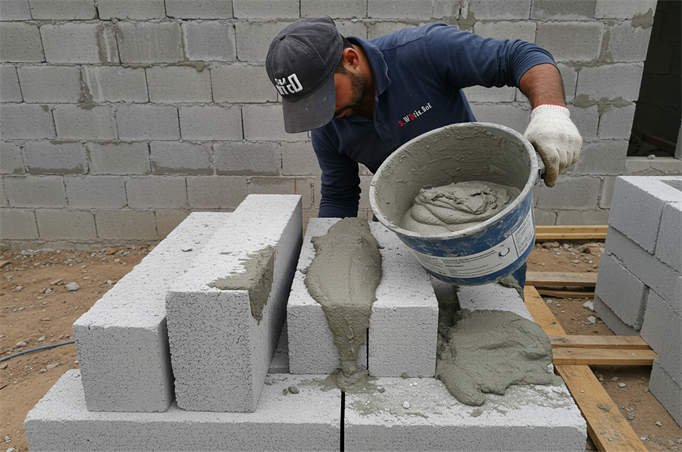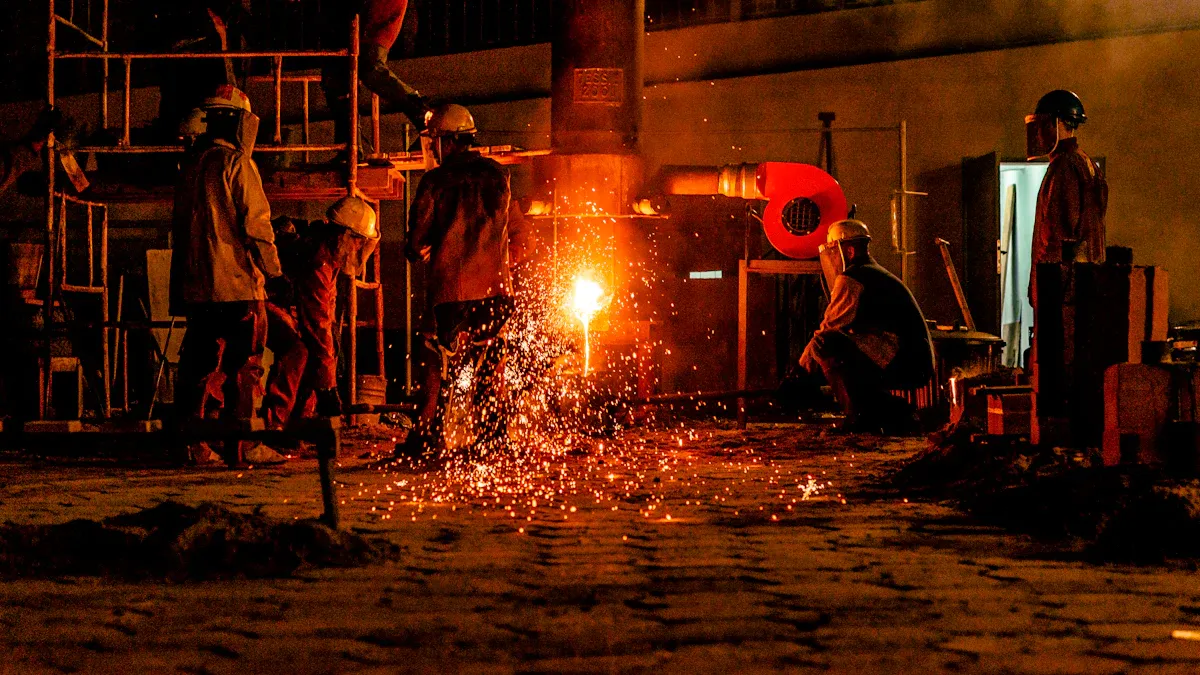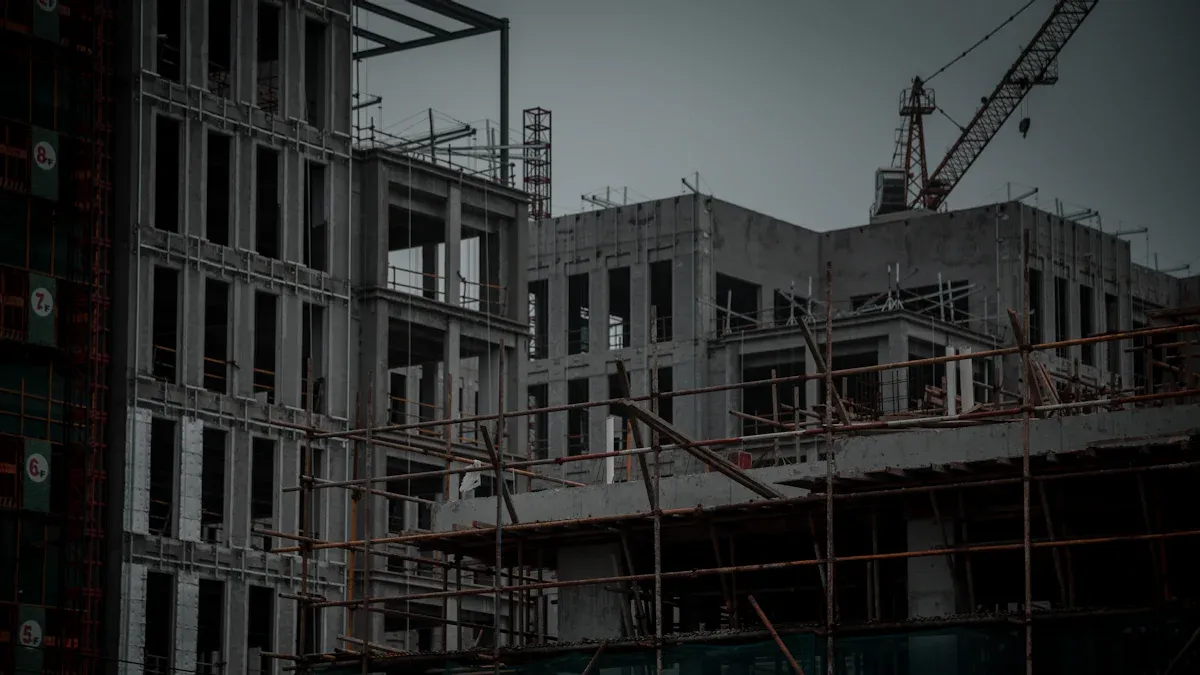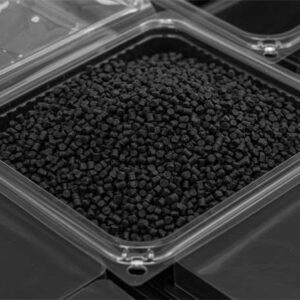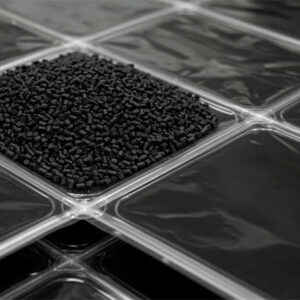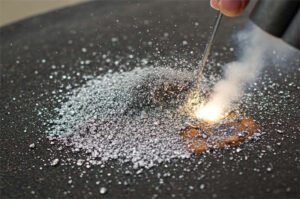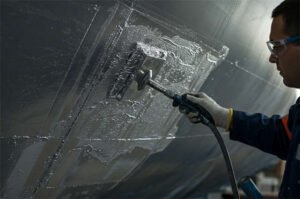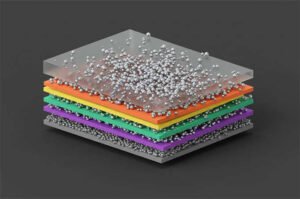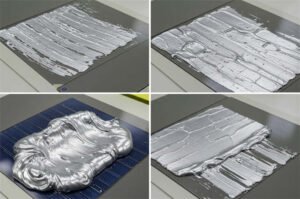You may ask if aluminum paste for autoclaved aerated concrete aac blocks works well. Many people say it helps make blocks that are strong and light. You want something you can trust that does not cost too much. It should be easy to use and give the same good results every time. People often want these things when they choose materials for their projects.
النقاط الرئيسية
- Aluminum paste makes AAC blocks light and strong. It also makes them easy to move. These blocks keep heat in and save energy.
- Mixing well and picking the right particle size is important. This helps make good blocks every time.
- Training workers and following safety rules is important. It helps stop mistakes and keeps workers safe with aluminum paste.
- Aluminum paste can cost a bit more at first. But it saves money on labor, transport, and energy later.
- Many builders say they get better results with aluminum paste. They also finish building faster. This makes it a smart pick for AAC blocks.
User Satisfaction
Feedback Overview
When you look at what people say about aluminum paste for autoclaved aerated concrete aac blocks, you see a mix of opinions. Many users feel happy with the results. They say the blocks come out light and strong. Some builders mention that the blocks have good insulation. You might notice that users like how the paste helps make the blocks easy to handle.
“I use aluminum paste every time I make autoclaved aerated concrete blocks. The blocks always turn out smooth and easy to cut,” says one builder.
Not everyone feels satisfied. A few users talk about problems with mixing. Sometimes, the paste does not blend well. This can lead to uneven blocks. Some people worry about the cost. They want to know if the price matches the quality. Others mention that they need to learn how to use the paste correctly.
Here is a quick look at what users say:
- 👍 Most users like the lightness and strength of the blocks.
- 👎 Some users find mixing tricky.
- 💰 Cost is a concern for a few builders.
- 🛠️ Training helps improve results.
Satisfaction Levels
You see that most users feel good about using aluminum paste. They say it makes their work easier. The blocks often meet their needs for building homes and offices. People who use autoclaved aerated concrete blockwork say the blocks are reliable.
A few users feel unsure. They want better instructions. Some wish the autoclaved aerated concrete blocks price was lower. You might find that satisfaction grows when users get proper training.
| Satisfaction Factor | User Response |
|---|---|
| Block Quality | High |
| سهولة الاستخدام | Medium |
| التكلفة | Mixed |
| Need for Training | Noted |
You can see that most people feel happy with the results. If you want strong, light, and easy-to-use blocks, many users say aluminum paste is a good choice.
Performance
Expansion & Porosity
When you use aluminum paste for autoclaved aerated concrete aac blocks, you see a big change in how the blocks form. The paste reacts with the mix and creates hydrogen gas. This gas forms bubbles, which turn into pores inside the block. These pores make the blocks light and easy to handle. You usually find that about 70–80% of the block is made up of these pores. The aluminum paste creates large pores, which help lower the block’s density and improve insulation.
If you add more aluminum paste, you get more hydrogen gas. This means more pores and a lighter block. But you need to be careful. Too much paste can make the pores too big or uneven. The size and spread of these pores also depend on how long you mix the paste and what other materials you use. For example:
- Aluminum paste creates macro pores, making up 45–55% of the total porosity.
- More paste means more gas, which increases porosity and lowers density.
- Stirring time and foam stabilizers also change how the pores form.
- Aluminum paste gives you fewer but larger pores than aluminum powder.
If you want blocks with good insulation and low weight, you need to watch how much aluminum paste you use. You also need to pay attention to the mixing process.
Consistency
You want every batch of autoclaved aerated concrete blocks to look and perform the same. The size of the aluminum particles plays a big role here. Fine aluminum powder, between 1 and 10 micrometers, helps you get even bubbles. This gives you a block with a smooth, even structure. These blocks keep heat in or out better, which saves energy.
If you use coarse aluminum powder, bigger than 10 micrometers, you get large, uneven bubbles. This can make the block weak and less reliable. To keep things consistent, many producers use ball milling to grind the aluminum powder down to the right size. They also use machines to sort the powder by size. This way, you get the same results every time you make a batch.
You can see that the right particle size and good mixing help you make strong, reliable blocks. This is important if you want to keep your customers happy and avoid problems with autoclaved aerated concrete blocks price or quality.
Challenges
You might run into some problems when working with aluminum paste for autoclaved aerated concrete aac blocks. Sometimes, the gas forms too quickly or too slowly. If the gas comes out too fast, the bubbles can pop or get trapped, making the block uneven. If the gas comes out too slow, you might not get enough pores.
Here are some common issues and ways to fix them:
- Control the speed of gas release to match how thick the mix gets. Try to keep the gas release at about 6–15ml in 2 minutes.
- Keep the mix temperature between 40–60°C. This helps the bubbles form evenly.
- Use aluminum paste with high active aluminum (at least 85%) and fine particles (less than 3% left on a 0.075mm sieve).
- Adjust the calcium-silicon ratio to stay between 0.55 and 0.80. Too much alkalinity can stop the aluminum from reacting.
- Add foam stabilizers, like soluble oil, to keep the bubbles from popping. This can make the bubbles last 30–50% longer.
- Check your raw materials, watch the process, and test the finished blocks for strength and gas generation.
- Use ball milling and sorting to get the right particle size and keep the mix even.
- Follow safety rules. Use water-based aluminum paste to avoid dust explosions, and treat wastewater properly.
Tip: If you want to avoid problems, always check your materials and keep an eye on the process. Good training and careful work help you get the best results from your aerated autoclaved concrete.
When you follow these steps, you can make autoclaved aerated concrete aac common blockwork that is strong, light, and reliable. You also keep your costs down and avoid issues with autoclaved aerated concrete blocks price.
Benefits of Aluminum Paste for Autoclaved Aerated Concrete AAC Blocks
Quality Improvement
You want your blocks to be better than others. عجينة الألومنيوم helps you do this. When you add it, the paste reacts and makes hydrogen gas. This gas forms small air pockets inside each block. These air pockets trap air and act as natural barriers. The blocks keep heat out in summer and hold warmth in winter.
Here’s what happens when you use aluminum paste for autoclaved aerated concrete aac blocks:
- The blocks are lighter, so you can carry and install them easily.
- The blocks are stronger and can handle more weight than blocks with other foaming agents.
- The insulation is better, so buildings stay comfortable.
- The pores are even, so every block looks and works the same.
Let’s look at some numbers. With aluminum paste, blocks can reach a compressive strength of 42 MPa after 28 days. Blocks with synthetic foaming agents only reach about 33 MPa. That means the blocks are 27% stronger. They last longer and do not break easily.
| Block Type | Aluminum Content | Density (kg/m³) | Compressive Strength (MPa) |
|---|---|---|---|
| Lightweight Geopolymer + Aluminum Powder | 0.01 %wt | 1830 | 42 |
| Lightweight Geopolymer + Synthetic Foaming Agent | Ratio 1:1.33 | 1766 | 33 |
You also get better insulation. The small particles in aluminum paste make even air pockets. These pockets slow down heat moving through the block. Your blocks keep buildings cool in summer and warm in winter.
Tip: If you want blocks that save energy and lower bills, use aluminum paste. You will see a difference in comfort and cost.
Process Efficiency
You want your production to go well. Aluminum paste helps with this. The paste mixes well with cement, lime, and fly ash. You do not have to worry about clumps or uneven bubbles. The mix stays smooth and the blocks come out the same every time.
New ways to make aluminum paste have made things better. Makers use pure aluminum powder. They treat the powder so it does not rust and stays stable. They grind it to the right size. Additives like thickeners and dispersants stop the paste from clumping. The mix pours easily and sets just right.
Here’s how these changes help you:
- Mixing and pouring are faster, so you save time.
- There are fewer mistakes, so you waste less and spend less.
- Gas forms evenly, so every block is the same.
- The paste works with many raw materials, so you can use what you have.
You also help the planet. Makers recycle and use clean ways to make the paste. This lowers your carbon footprint and helps you meet green building rules.
Note: When you use aluminum paste, you get good results and save money. You do not spend much on repairs or new blocks. Your autoclaved aerated concrete blockwork stays strong and works well.
If you want to keep your autoclaved aerated concrete blocks price low and your quality high, aluminum paste is a smart choice. You get blocks that work well, save energy, and last longer. Your projects go smoother, and your customers are happy.
Cost & Value
Investment
When you use autoclaved aerated concrete blocks, you want to know the costs. Most of your money goes to buying materials. For AAC blocks made with طين معجون الألومنيوم المعجون, you pay about $28.72 for each cubic meter. Labor adds another $27.87 to $38.76 for every cubic meter. If you add up all the costs—materials, labor, management, profit, and tax—the total is about $93.40 per cubic meter. Moving the blocks can take up 20% to 30% of the total cost. This depends on how far you need to ship them.
Here’s a simple breakdown:
| Cost Component | AAC Blocks (Aluminum Paste Slurry) | Notes/Comparison |
|---|---|---|
| التكلفة المادية | $28.72 per m³ | Includes mortar, auxiliary materials |
| تكلفة العمالة | $27.87 – $38.76 per m³ | Masonry, handling, auxiliary labor |
| Total Cost | $93.40 per m³ | Includes all expenses |
| النقل والمواصلات | 20%-30% of total cost | Varies by distance |
| Management & Profit | 7%-10% management, 8%-10% profit | Included above |
| Clay Bricks (for comparison) | $38.9 – $44.4 material, $41.7 – $48.6 labor | AAC blocks are usually cheaper |
Note: AAC blocks often cost less than clay bricks. You also get better insulation and lighter blocks.
Savings
AAC blocks help you save money in many ways. The blocks are light, so you pay less to move them. You can finish building faster because the blocks are easy to cut and put in place. Builders say they use less mortar and do not need as many repairs. The good insulation means you spend less on heating and cooling. Over time, these savings really add up.
- Lower moving costs because blocks are lighter
- Faster building means less time spent on labor
- Better insulation saves money on energy bills
- Fewer repairs and less waste
Tip: To keep your autoclaved aerated concrete blocks price low, look for these long-term savings.
Alternatives
You might think about using other foaming agents to save money. The most common ones are synthetic foaming agents and aluminum powder. Synthetic foaming agents use chemicals to make foam. These blocks are light, with density around 1000 kg/m³ and strength up to 33 MPa. Aluminum powder makes stronger blocks, with density up to 1830 kg/m³ and strength up to 42 MPa. It is hard to find exact prices for these options. Most builders pick aluminum paste slurry because it gives steady results and strong blocks.
| Foaming Agent Type | Density (kg/m³) | Compressive Strength (MPa) | Notes |
|---|---|---|---|
| Synthetic Foaming Agent | ~1000 | Up to 33 | Good for lightweight |
| Aluminum Powder | ~1830 | Up to 42 | Stronger blocks |
You can see that other choices are out there, but many people use aluminum paste slurry for good value and strong blocks.
سهولة الاستخدام
Mixing
You want your blocks to turn out right every time. Mixing plays a big part in this. Start by dry mixing your cement, lime, gypsum, and sand or fly ash. This step helps you blend all the dry parts together. Next, add water slowly. Keep an eye on the water-to-solid ratio. You want the mix to feel smooth, not too thick or too thin.
Now comes the important part. Add the عجينة الألومنيوم quickly and mix it in well. The reaction starts as soon as the paste hits the slurry. Mix for about 3 to 5 minutes at a steady speed. This helps bubbles form evenly, making your blocks light and strong. If you mix too long, you might lose some of the gas, and your blocks could turn out heavy or uneven.
Tip: Always mix the aluminum paste in right after you add water. Don’t wait, or you might not get the bubbles you need.
السلامة
Handling aluminum paste means you need to stay safe. Store the paste in a cool, dry place. Keep it away from acids, bases, and things that can catch fire. When you work with the paste, wear gloves, long sleeves, and a mask. This keeps dust off your skin and out of your lungs.
Here are some safety steps you should follow:
- Use non-sparking tools and flame-retardant clothes.
- Make sure your work area has good airflow.
- Never use water or foam to put out an aluminum fire. Use a Class D fire extinguisher or dry sand.
- Always read the safety sheet that comes with your aluminum paste.
Note: Training your team on these safety rules can help prevent accidents and keep everyone healthy.
Training
You don’t have to figure everything out on your own. Some companies offer training to help you use aluminum paste the right way. For example, Boyan Pigment gives training as part of their service. They show you how to handle the paste, mix it, and keep your process running smoothly. This kind of training can help you avoid mistakes and make better blocks.
Many users say that after training, they feel more confident. They make fewer errors and get better results. If you’re new to making autoclaved aerated concrete blocks, ask your supplier if they offer training or support.
Callout: Good training makes your job easier and your blocks better. Don’t skip it!
User Stories
Positive Cases
You might wonder how real builders feel about using aluminum paste in their projects. Many share stories about how it changed their work for the better. For example, one contractor in Texas started using aluminum paste for autoclaved aerated concrete blocks on a new school building. He said the blocks felt much lighter than regular bricks. His team finished the walls faster and used less mortar. The school now stays cooler in summer, and the energy bills dropped.
Another builder in Florida shared,
“I switched to autoclaved aerated concrete aac common blockwork last year. My clients love the smooth finish and the way the blocks keep noise out. I also noticed fewer cracks and less waste during construction.”
You can see that many users enjoy the easy handling and strong results. They say the blocks look great and last longer. Some even mention that the autoclaved aerated concrete blocks price is worth it because of the savings on labor and energy.
Negative Cases
Not every story is perfect. Some builders face problems when they first try aluminum paste. One user in California tried to mix the paste without training. He ended up with uneven blocks and lots of waste. He said,
“I thought I could just add the paste and mix. The blocks came out with big holes and did not pass the strength test.”
Another builder in India struggled with the mixing process. He used too much water, and the blocks turned out weak. He had to redo part of the project, which cost extra time and money.
You might face these issues if you skip training or do not follow the right steps. Most users say that after learning the correct process, their results improve. Mistakes can happen, but you can avoid them with practice and support.
If you want blocks that are light and strong, aluminum paste is a good pick for autoclaved aerated concrete aac blocks. These blocks give you important benefits:
- You can move and carry the blocks easily.
- The blocks keep heat and noise out.
- Building with these blocks costs less and helps the environment.
You need to be careful about strength and moisture problems. Always check how much aluminum you use و keep the paste stored safely. Pick the right size of particles and learn how to use the paste for the best results.
الأسئلة الشائعة
What does aluminum paste do in autoclaved aerated concrete blocks?
Aluminum paste makes bubbles in the mix. These bubbles fill the blocks with air pockets. The blocks become light and easy to move. They also keep heat and cold out well.
Can I use aluminum powder instead of aluminum paste?
You can use aluminum powder if you want. But aluminum paste mixes in better. It helps you get smoother blocks every time. Most builders pick paste for better quality.
Is it hard to learn how to use aluminum paste?
It is not hard to learn. Many companies teach you how to use it. After you learn the steps, you can make strong blocks. You will not have much trouble.
Does using aluminum paste change the price of autoclaved aerated concrete blocks?
Aluminum paste can make the material cost a bit higher. But you save money on labor and energy. Over time, the price of the blocks can go down. You finish jobs faster and use less energy.
How do I keep my blocks strong and light?
Follow the mixing steps each time. Use the right amount of aluminum paste. Always check your materials before you start. Good training helps you make strong and light blocks.

